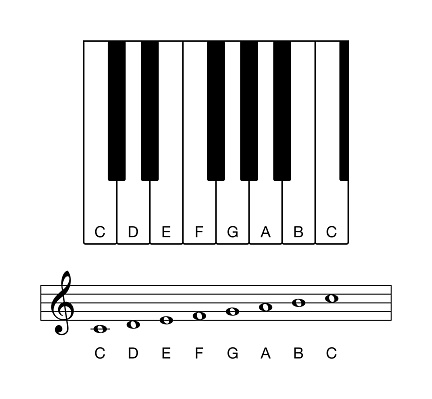Understanding Scales
Scales are very simple on the surface and once understood can provide a great amount of depth to music. A scale is just notes played in a certain order.
Scales can make different sounds depending on the spacing of the notes used. Some scales sound very happy while others sound dark or menacing. You change the sound
by adjusting the spacing of the notes. The scales are made with patterns so that you can play them in all 12 keys. You would change the key by adjusting the starting note or by targeting
the root note and using other notes of the scale. You rememeber seeing all 12 notes in order, now lets take a look at what happens when you remove certain notes to build a scale.
| C Major Scale | |||||||||||||||
|---|---|---|---|---|---|---|---|---|---|---|---|---|---|---|---|
| C | - | D | - | E | - | F | - | G | - | A | - | B | - | C | (Octave) |
| A C scale happens to only be made from natural notes. | |||||||||||||||

A C scale is quite easy because it only consists of natural notes or the white keys on a piano! If you were to sit at a paino
and only play the white keys almost anything you could play would sound good and be in key! By starting on C and playing the white keys successively
you will automatically play a C scale. An interesting thing is that once you know the notes in a Major scale there is always a minor scale that
corresponds to it. If you count 6 notes into the scale and play the same notes in a new order it will change the sound to the relative minor. For the key
of C the sixth note would be A! If you play the same pattern starting on A it will result in an A minor scale.
| A Minor Scale | |||||||||||||||
|---|---|---|---|---|---|---|---|---|---|---|---|---|---|---|---|
| A | - | B | - | C | - | D | - | E | - | F | - | G | - | A | (Octave) |
| A minor scale plays the same notes as C major but from a different starting point. | |||||||||||||||
Both of these scales sound vastly different but also tonically similiar! You can change the entire feeling of a song just by the way you play the 7 notes of a scale. You could
spend years just mastering these two simple scales across all 12 keys!